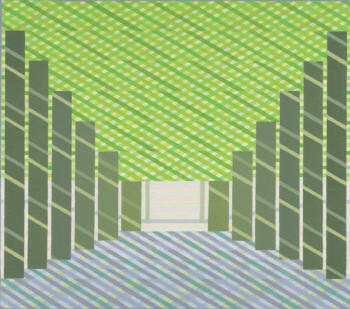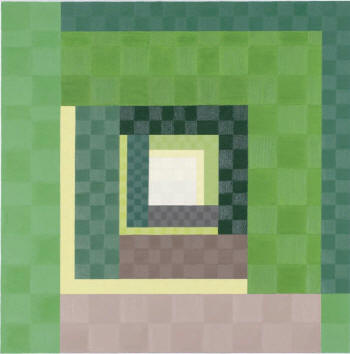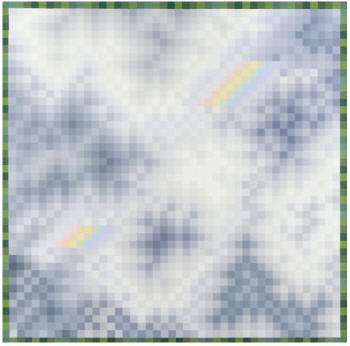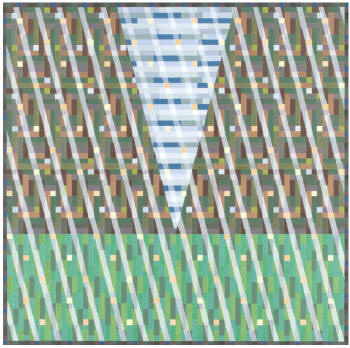|
|
| home | features | exhibitions | interviews | profiles | webprojects | gazetteer | links | archive | forum |
|
John Hopwood: Memory Transformed by Time New Millenium Gallery, St Ives July and August, 2008
One of the things that's interesting about Mondrian is that it is possible to see how his famous grid paintings of the 20s and 30s were derived through a gradual process of drawing and re-drawing from earlier studies of trees. A number of modernists, including those associated with St Ives, abstracted forms from nature using a similar methodology: using only the hand, the eye, and various intuitive, arcane processes of aesthetic judgment. John Hopwood, like Mondrian, is an abstract artist inspired by the landscape yet the process by which that abstraction takes place is different; more conceptual and more contemporary. The collection of work, currently at New Millenium, is therefore quietly challenging to traditions of St Ives art, and to many artists who still use a modernist approach to form. In the 80s state of the art computer graphic cards displayed 16 colours in arrays of 320x200 pixels. Games like Ultima for the PC required the player to go exploring fantasy landscapes rendered in tile-like squares of green, pink and blue, in which details like daisies showed up as white squares on a plain green background. Square pixel-like blocks can now be obtained at the click of a button using the 'mosaic' function of Paintshop Pro or Photoshop. It is the same partially alienated and mechanical transformation that Hopwood's work appears to partake of. There is the sense that the landscapes of Cornwall, and elsewhere, have been squeezed through a filter: rendered through a mechanical process, that whilst requiring modernist-style aesthetic judgments on the part of the artist, somehow displaces those judgments. The image ends up taking on a cybernetic quality: in which each square of the canvas is flat, luminous and given similar weight. The result is minimal and distinctive, and most effective in the symmetrical structures evident in 'Alley of Limes' (above top) or 'Tunnel of Trees' (above bottom), where the original subject is not immediately apparent, and is only revealed on reading the title.
In a few of the other works the subjects are almost impossibly Romantic. In 'Sky: Fragments of rainbow' (below right) and 'Autumn rain' (below left) Hopwood uses subjects that Turner himself would have approved of, and submits them to this same filtering process. The romanticism is not completely filtered out of the paintings, however; there is a still a sense of the sublime straining to be felt; yearning to be recomposed in the mind of the viewer.
RW 3.8.08
|
|
|




